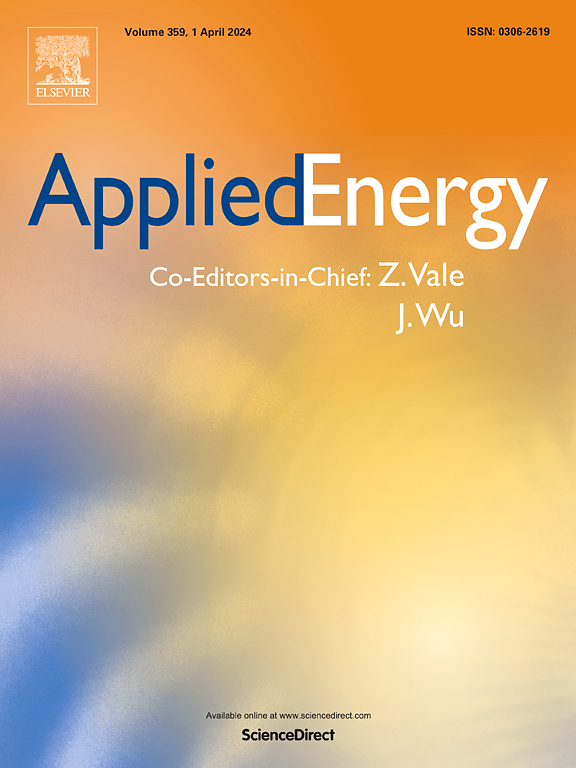Consumer preferences and willingness to pay for EV charging: Implications for incentives to promote off-peak charging and renewables integration
IF 11
1区 工程技术
Q1 ENERGY & FUELS
引用次数: 0
Abstract
Electric vehicle (EV) charging patterns are expected to strain electricity grids, particularly during peak residential demand in the evening. Demand-side management emerges as a potential strategy to manage this surge and align demand with supply constraints. This study investigates consumer preferences related to electric vehicle charging, focusing on the determinants influencing charging decisions during periods of electricity supply constraints or renewable energy abundance. We employ a discrete choice experiment on a representative sample of the Israeli population to assess preferences for various charging scenarios and extrapolate marginal willingness to pay values to understand the effectiveness of different incentive schemes. Key findings include a preference for evening charging, with average discounts of 20% to shift demand to nighttime, 23% to daytime, and 37% to weekends. Distinct preferences were observed among Sabbath observers, suggesting that lifestyle factors influence charging patterns. Based on our analysis, a 0.07 USD/kWh discount is needed to incentivize daytime charging, while marginal willingness to pay for green electricity reaches 0.06 USD/kWh, suggesting that communicating the renewable share in the energy mix may help reduce the discount needed. We also find that uniform tariffs may create unintended consequences, such as new peak loads in high-EV, low-renewable regions. Therefore, we recommend regionally differentiated time-of-use tariffs, further refined by season, day type, and time of day. These findings support the design of targeted incentives that reflect consumer preferences while improving grid resilience and renewable energy integration, especially in isolated electricity systems like Israel.
消费者对电动汽车充电的偏好和支付意愿:促进非高峰充电和可再生能源整合的激励意义
电动汽车(EV)的充电模式预计会给电网带来压力,尤其是在晚间住宅用电高峰期间。需求侧管理成为一种潜在的策略,可以管理这种激增,使需求与供应约束保持一致。本研究调查了与电动汽车充电相关的消费者偏好,重点关注在电力供应受限或可再生能源丰富期间影响充电决策的决定因素。我们对以色列人口的代表性样本进行了离散选择实验,以评估对各种收费方案的偏好,并推断边际支付意愿值,以了解不同激励方案的有效性。主要调查结果包括,人们更喜欢在晚上充电,将需求转移到夜间的平均折扣为20%,将需求转移到白天的平均折扣为23%,将需求转移到周末的平均折扣为37%。在安息日的观察者中观察到不同的偏好,表明生活方式因素影响充电模式。根据我们的分析,需要0.07美元/千瓦时的折扣来激励白天充电,而支付绿色电力的边际意愿达到0.06美元/千瓦时,这表明传达可再生能源在能源结构中的份额可能有助于减少所需的折扣。我们还发现,统一电价可能会产生意想不到的后果,比如在高电动汽车、低可再生能源地区出现新的峰值负荷。因此,我们建议按季节、天气类型和一天中的时间进一步细化地区差别的使用时间关税。这些发现支持设计有针对性的激励措施,以反映消费者的偏好,同时提高电网的弹性和可再生能源的整合,特别是在像以色列这样的孤立电力系统中。
本文章由计算机程序翻译,如有差异,请以英文原文为准。
求助全文
约1分钟内获得全文
求助全文
来源期刊

Applied Energy
工程技术-工程:化工
CiteScore
21.20
自引率
10.70%
发文量
1830
审稿时长
41 days
期刊介绍:
Applied Energy serves as a platform for sharing innovations, research, development, and demonstrations in energy conversion, conservation, and sustainable energy systems. The journal covers topics such as optimal energy resource use, environmental pollutant mitigation, and energy process analysis. It welcomes original papers, review articles, technical notes, and letters to the editor. Authors are encouraged to submit manuscripts that bridge the gap between research, development, and implementation. The journal addresses a wide spectrum of topics, including fossil and renewable energy technologies, energy economics, and environmental impacts. Applied Energy also explores modeling and forecasting, conservation strategies, and the social and economic implications of energy policies, including climate change mitigation. It is complemented by the open-access journal Advances in Applied Energy.
 求助内容:
求助内容: 应助结果提醒方式:
应助结果提醒方式:


